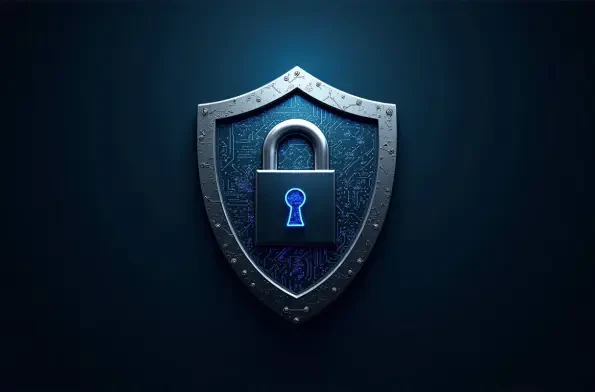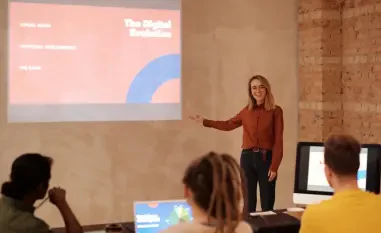In the rapidly evolving landscape of cybersecurity, staying ahead of attackers is a constant challenge. Malik Haidar, a seasoned expert in the field, has spent years addressing threats and developing strategies within multinational corporations. His approach, which integrates business perspectives into cybersecurity practices, offers valuable insights into how organizations can better defend against cyber threats.
Could you explain what “Secure by Design” means and why it is crucial in today’s digital world?
“Secure by Design” is about embedding security into the foundation of tech infrastructure from the outset rather than as an afterthought. In today’s interconnected world, where cyber threats are relentless, it becomes crucial to ensure that all aspects of software and hardware are fortified against potential attacks. This proactive approach mitigates risks and reduces the need for reactive measures.
Chris Wysopal mentioned that no red team efforts have ever failed. Can you provide insights into why this has been the case historically?
Red teams often succeed because they exploit the inherent vulnerabilities present in systems not initially designed with security as a primary focus. Historically, the complexity of systems and the lack of comprehensive security integration give attackers numerous avenues to breach defenses, despite the many layers of protection organizations may implement over time.
You stated that software and the internet weren’t built with security in mind. How does this legacy impact current cybersecurity strategies?
This legacy greatly complicates current cybersecurity efforts. It requires us to constantly retrofit security measures, often leading to a reactive posture rather than a proactive one. The foundational flaws and open architectures mean defenders must work diligently to patch known vulnerabilities while also anticipating new ones.
What changes were made in the national cybersecurity strategies of 2023 and 2024 to help defenders gain an advantage?
The recent strategies emphasize integrating security from the ground up and fostering collaboration across sectors. They encourage developing infrastructures with security in mind from the beginning, alongside real-time threat sharing and analytics to provide a clearer picture of emerging threats, helping defenders to preemptively act rather than react.
How significant is the improvement in software security, such as the 20% increase in applications passing the OWASP Top 10 checks from 2020 to 2025?
This improvement is quite significant. It not only highlights growing awareness and capability in secure coding practices but also reflects a shift in industry standards. More applications passing these checks means more robust protection against common vulnerabilities, thereby narrowing the window of opportunity for potential attackers.
Could you elaborate on the drop in exploitability of CVEs from 3.7% to 2.7% over five years and its implications for the cybersecurity landscape?
The decline in CVE exploitability is encouraging, indicating that efforts in vulnerability management and secure coding are making an impact. This trend suggests that not only are vulnerabilities being identified more quickly, but they are also becoming more complex and less likely to be exploited, thus improving the overall resilience of systems.
What are some of the main obstacles that remain in software security, despite recent improvements in vulnerability detection?
A significant obstacle remains in the form of prioritization. As software development accelerates, there’s constant pressure to deliver new features quickly, often at the expense of thorough security measures. Additionally, hidden dependencies, especially those involving third-party libraries, continue to pose risks that are not always directly under the organization’s control.
Can you explain the concept of software security debt and its impact on organizational cybersecurity practices?
Software security debt is akin to technical debt; it represents unresolved vulnerabilities that have accumulated over time. This debt impacts organizations heavily, as it can lead to heightened risk of exploitation and increased costs down the line, requiring significant time and resources to address these vulnerabilities retroactively.
What challenges do organizations face when dealing with vulnerabilities in third-party open-source components?
The use of third-party open-source components introduces vulnerabilities that organizations might not be fully aware of due to the complex web of dependencies. Managing these challenges requires diligent tracking and updating, often necessitating a comprehensive inventory of software components to enable rapid response when vulnerabilities are disclosed.
Large organizations seem slower at fixing vulnerabilities compared to smaller ones. What factors contribute to this discrepancy?
Larger organizations often have more complex infrastructures and bureaucratic processes, which can hinder rapid response. The scale and diversity of their operations make it challenging to implement patches across the entire organization swiftly. Communication breakdowns and resource constraints also play significant roles in delaying the remediation process.
How is artificial intelligence reshaping software development in terms of security, both positively and negatively?
AI is revolutionizing software development by enhancing efficiency and enabling more sophisticated security tools. However, it can also introduce new risks, as rapid AI-assisted coding might miss subtle but critical security flaws. There’s a balancing act between leveraging AI to improve productivity and ensuring that security remains paramount.
What potential does AI have in auto-remediation of code to improve cybersecurity?
AI’s potential in auto-remediation is vast. It could automatically identify and fix vulnerabilities as code is written, drastically reducing the time between vulnerability detection and remediation. This automation could alleviate the pressure from developers and security teams, allowing them to focus on more strategic security challenges.
How could AI-based coding practices eventually close the remediation gap more effectively than traditional methods?
AI-based practices can analyze and apply security patterns consistently and quickly across codebases. Unlike traditional methods, which rely heavily on manual processes, AI can provide immediate feedback and corrections, reducing the window of exposure and the likelihood of exploitable flaws going unnoticed.
You mentioned transparency and accountability as crucial factors. Could you discuss the role of mandatory software attestation in achieving these goals?
Mandatory software attestation introduces a level of transparency that hasn’t historically been part of software development. By requiring developers to provide security credentials for their applications, stakeholders can make informed decisions about the products they use, fostering a culture of accountability from the developers’ end.
How can embedding security into software development timelines prevent it from being seen as an obstacle?
By integrating security into each step of the development timeline, it becomes a part of the overall workflow rather than a last-minute addition. This not only elevates the importance of security but also ensures that it doesn’t slow down the development process, thereby changing the perception of security as a hindrance.
Jason Healey and Chris Wysopal discussed the glass being half full regarding cybersecurity progress. What concrete steps can organizations take to enhance their security posture further?
Organizations can improve their security posture by adopting a culture of continuous improvement, emphasizing secure coding practices, and using real-time analytics to respond to threats. Investing in employee training, establishing clear security policies, and fostering cross-departmental collaboration are key steps toward building resilient defenses.
What are the key takeaways for cybersecurity leaders from the RSAC 2025 discussion on winning the Secure by Design battle?
The main takeaways include the need to prioritize security from the start and recognize it as a vital component of digital transformation. Leaders should focus on bridging the gap between development speed and security robustness, utilize AI responsibly, and push for industry-wide transparency and cooperation to tackle systemic security challenges.
What is your forecast for cybersecurity, given the current trends and technological advances?
Looking ahead, I see a continued emphasis on integrating AI for defensive purposes, leading to more autonomous and adaptive security systems. The collaboration between public and private sectors will likely strengthen, fostering a more unified approach to tackling cyber threats. However, as technology advances, so will the sophistication of attacks, requiring an ever-evolving and proactive security strategy.













